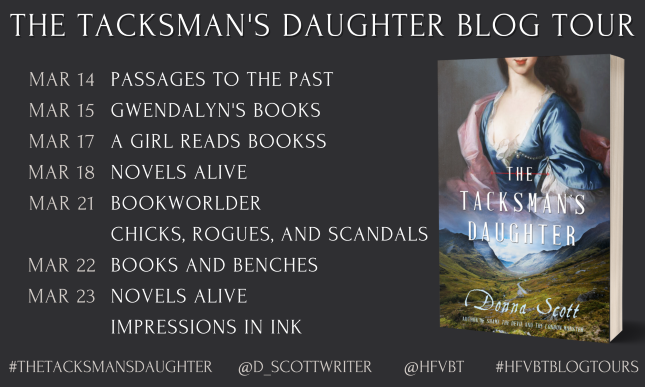
I fell in love with Scotland many years ago from reading books about its history and viewing images of the castles and beautiful geographical landmarks the country boasted. It wasn’t until early 2015, however, that I was able to travel to all the places I had dreamed of visiting.
I went with a friend, and on our drive into Glencoe, we stopped to listen to the piper play against the backdrop of lush green peaks dusted in fog. Sprigs of fuchsia foxglove and thistle, deep purple Scottish primrose and bluebells, and yellow bog asphodel grew in wild bunches along the roadside. It was magical. Serene. When we reached Glencoe, we were greeted by the quaint little village at the foot of the braes nestled between Loch Leven and the River Coe. After checking in to Glencoe House, we realized we had arrived at a very special place. As I wrote this book, I tried to capture the essence of the town and people, honouring their history with my retelling of Glencoe’s tragic past.
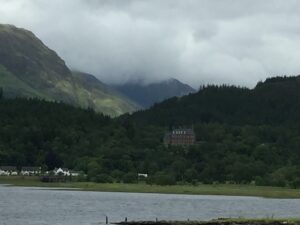
The Glencoe Massacre may have occurred more than three hundred years ago on February 13th, 1692, but it remains a very sensitive subject for MacDonalds and Campbells even today. For twelve days, soldiers—both English and Scottish—billeted in Glencoe and were provided with food, drink, and entertainment until the weather improved. Instead of leaving peacefully and thanking MacIain the clan chief, the troops committed one of the most heinous crimes in Scottish history.
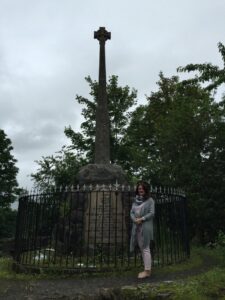
Both Highland clans carry a deep respect for Highland law and customs but disagree as to whom is truly to blame for the horrible act on that fateful day in February. Both sides do agree, however, that certain individuals should have been prosecuted for their involvement, but because of the politics at the time and King William’s probable hand in the matter, those people were not punished sufficiently.
There were several key figures involved in the attack and a definite hierarchy within the chain of command. Naturally, King William was at the pinnacle of the chain of command. During the Glorious Revolution in England when he overthrew the Catholic King James II—who was, by the way, his father-in-law—several Highland clans were not happy. James was a Scot by birth and the younger brother of Charles II, so when Charles died without a legitimate heir, he naturally took the throne. But his reign only lasted a little over three years, when he was sent into exile in France after making some arrangements with Louis XIV.
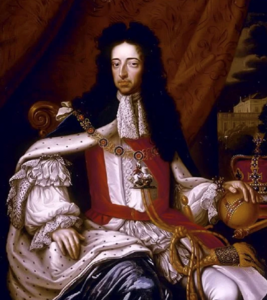
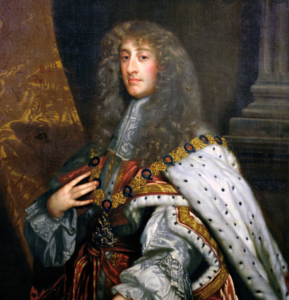
There was dissent between the clans and question as to whether William was the true king and belonged on the throne. So when King William required each of the clan chiefs to sign a document pledging their loyalty to him, not all of them were quick to grab a quill and ink. The MacDonald chief of Glencoe, MacIain, was offered indemnity—like all the others—if he signed and took the oath before January 1, 1692. However, a few things happened to delay his pledge. First, he didn’t get word of this decree until it was due. Second, a huge winter storm arrived, making the passage south to Inveraray impossible. Third, he headed north instead to Fort William to sign, but there was no official there to take his oath, so he was turned away. By the time he signed the document, it was January 6th, and William’s secretary of state for Scotland, John Dalrymple, Master of Stair, who was well known for his distaste of the clans, issued an order for military punishment against the MacDonalds of Glencoe.
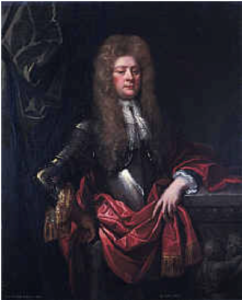
John Campbell, Earl of Breadalbane, the man just under Dalrymple, regularly quarreled with the MacDonalds and was likely thrilled with this information. Over the years, the Campbells and MacDonalds had regularly stolen each other’s cattle and laid claim to each other’s lands. So even though other clan chiefs swore their allegiance later than January 1st, and others swore by proxy, only MacIain was excluded from indemnity. For this reason, many believe the orders to attack that morning in February came from Breadalbane, who held a burning grudge against the MacDonald clan.
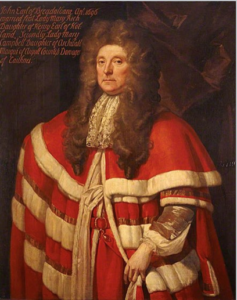
Fortunately for Breadalbane, he had a cousin he could easily take advantage of because of his financial desperation. Robert Campbell of Glenlyon was on the brink of bankruptcy due to his heavy drinking and gambling and often expressed outward hatred for the MacDonalds. Knowing this, Breadalbane offered him a salary if he would accept a commission as the captain in charge of marching his regiment to Glencoe that winter. Whether or not Breadalbane already had the attack in mind, remains in debate. Nonetheless, on the evening of February 12th, Glenlyon received written orders “to put all (MacDonalds) to the sword under seventy”.
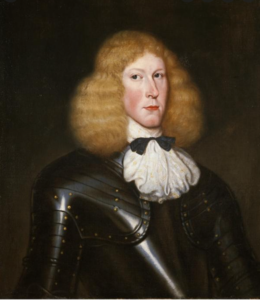
Years later, an inquiry into the attack was made because word of it had traveled all over England and people were outraged. King William, having thoroughly denied that he had played any part in the matter, was pressured by his wife Mary to investigate. In the end, those at the top of the chain of command—Dalrymple and Breadalbane—were barely punished, and Robert Campbell, Breadalbane’s scapegoat died a social pariah and penniless. Naturally, the light punishments left many to believe the king undoubtedly had a hand in it.
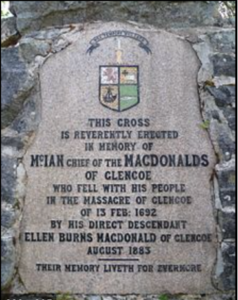

Publication Date: December 27th, 2021
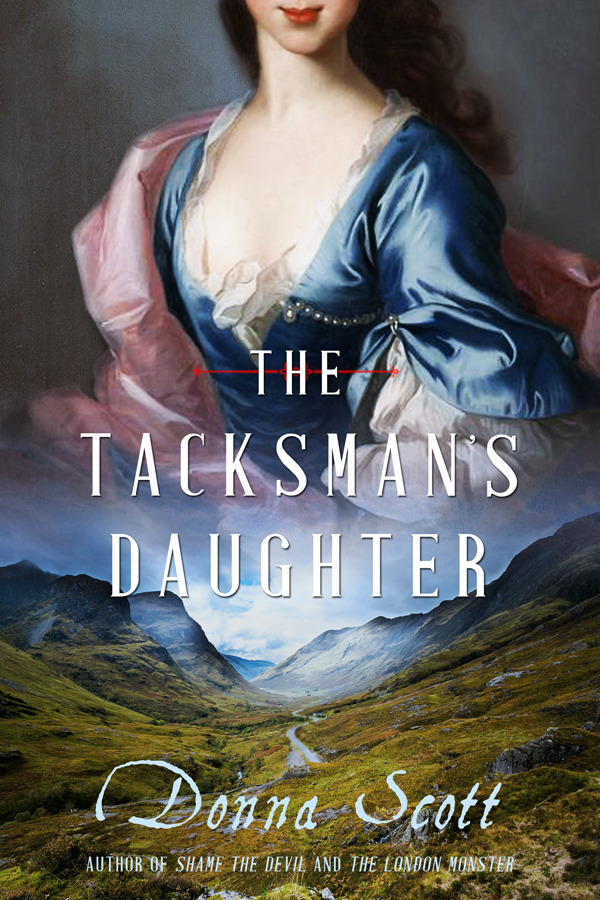 Scotland, 1692. To escape a brutal winter storm, King William’s regiments descend on the small village of Glencoe. Caitriona Cameron, the tacksman’s daughter, cannot forget her unpleasant encounter the last time English troops appeared. She senses the army’s arrival might not be as innocent as it seems, but her warnings go unheeded. Not even MacIain, the MacDonald clan chief, listens. After twelve days of billeting in the villagers’ homes, the soldiers attack, committing one of the greatest atrocities in Highland history.
Scotland, 1692. To escape a brutal winter storm, King William’s regiments descend on the small village of Glencoe. Caitriona Cameron, the tacksman’s daughter, cannot forget her unpleasant encounter the last time English troops appeared. She senses the army’s arrival might not be as innocent as it seems, but her warnings go unheeded. Not even MacIain, the MacDonald clan chief, listens. After twelve days of billeting in the villagers’ homes, the soldiers attack, committing one of the greatest atrocities in Highland history.
Cait escapes the assault with the help of Sergeant Edward Gage who is accused of being a traitor for not taking up arms against the MacDonalds. Edward is hunted by his debauched half-brother, Alexander, who stands to lose everything if King William attaints their father for his treasonous past deeds. With bad blood between them, Alexander sets out to capture Edward to prove his loyalty and save himself from ruin.
Cait and Edward travel to Edinburgh to confront the men they suspect are behind the attack, unaware that Alexander is headed there as well. Although Cait is convinced the chief of Clan Campbell is responsible, Edward suspects something much more sinister—that the orders came from higher up, possibly even from the king himself.
As accusations of betrayal, deceit, and treason abound, they are all trapped in a web of intrigue and danger, but not everyone will escape.



 During the blog tour, we have one copy of The Tacksman’s Daughter up for grabs! To enter, please leave a comment below with your email address. Disclaimer: By entering this giveaway, your email will be added to Donna Scott’s newsletter.
During the blog tour, we have one copy of The Tacksman’s Daughter up for grabs! To enter, please leave a comment below with your email address. Disclaimer: By entering this giveaway, your email will be added to Donna Scott’s newsletter.
The giveaway is open to the US only and ends on March 23rd. You must be 18 or older to enter.


Donna Scott is an award-winning author of 17th and 18th century historical fiction. Before embarking on a writing career, she spent her time in the world of academia. She earned her BA in English from the University of Miami and her MS and EdD (ABD) from Florida International University. She has two sons and lives in sunny South Florida with her husband. Her first novel, Shame the Devil, received the first place Chaucer Award for historical fiction and a Best Book designation from Chanticleer International Book Reviews. Her newest novel, The London Monster, was released in November 2020. To learn about new releases and special offers, please sign up for Donna’s newsletter.

Monday, March 14
Review at Passages to the Past
Tuesday, March 15
Review at Gwendalyn’s Books
Thursday, March 17
Review at A Girl Reads Bookss
Friday, March 18
Review at Novels Alive
Monday, March 21
Excerpt at Bookworlder
Review at Chicks, Rogues, and Scandals
Tuesday, March 22
Excerpt at Books & Benches
Wednesday, March 23
Guest Post at Novels Alive
Review & Excerpt at Impressions In Ink





















It sounds like a great story, and I love the time period and the pretty cover.
yellowbutterfly1974(at)yahoo(dot)com